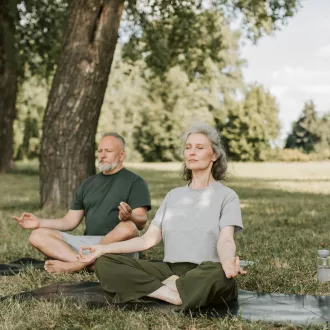Transcription Motivation in the life coachig
The truth is that the brain is programmed by default to expend as little energy as possible and to protect you, even from yourself if it senses any kind of risk or stress. It likes its comfort zone. It is easier to complain than to act to solve a problem. You will always find justifications and choose the path of least resistance. This often translates into fear, or laziness, or procrastination. We have to train our brain to choose another option and work in our favor when we want to achieve goals. For this, motivation plays a key role.
Motivation is the action of motivating, of moving to action, either ourselves or other people. It is to provide a reason for something to happen or to act in some way. It is a fundamental element of human behavior and is directly linked to performance, productivity, commitment and quality of life.
Motivation is paramount to continuing to achieve results in the long run, and despite obstacles along the way. Achieving success takes discipline, hard work and pushing the limits of our talent. But to get there we have to find and maintain the motivations that work for us and drive us to achieve our goals.
Theories of motivation
Motivation has been the subject of numerous studies trying to understand human behavior, and how to use these results to create strategies to help us improve.
Abraham Maslow proposed one of the most popular theories with his pyramid of needs. He proposed that human beings have 5 groups of needs with a hierarchy. At the base are the basic ones (physiological: breathing, food, rest, sex, etc.), then it goes up to the security needs (physical security: a house, health, employment, etc.), then in a third level the needs of affiliation (interpersonal relationships, belonging to a group), in a higher link are the needs of recognition (self-esteem and recognition of others) and at the top are the needs of self-actualization (morality, creativity, acceptance of facts and problem solving):
- It is a matter of seeing which need we are not meeting as we cannot aspire to meet another higher need or find motivation to do so as long as this one is not resolved. If one of the needs has priority at that moment in your life, your motivations will be directed to this one.
- Maslow also talks about motivation in terms of plans and goals because when you set a vision of life, a future goal, you move to achieve it. Just by raising it, you are moved to change, because it implies leaving your comfort zone.
- The theories of the three needs of John Atkinson and David McClelland have also been very well received. Here the 3 main motivational factors are the need for achievement, power and affiliation.
- There are many other theories such as Frederik Herzberg's two-factor theory; self-determination theory with intrinsic and extrinsic motivational factors; Edwin Locke's goal-setting theory; and Victor Vroom's expectancy theory. Each one with its proposal of factors that affect motivation and how to enhance this aspect in people.
Types of motivation
People do not move without motivation. It can be a primary need such as those related to survival: hunger, thirst, sleep, sex. It can be for a more complex need of a social nature. Often the motivation is not in the real value of the reward but in the importance given to it by the person. Motivations therefore vary from person to person and different types have been identified. These are the best known:
- Extrinsic motivation: the stimuli come from outside, not from the activity itself. It is about achieving a reward but the actions to be performed may be of no interest to the person. It can be obtaining money, a promotion, passing an exam, recognition. It is transitory, it is not maintained in the long term but must be renewed periodically to maintain the same level of motivation.
- Intrinsic motivation: the reward is in the activity itself. It comes from within, from the desire to learn, to develop, to enjoy relationships, to do the work itself. It does not only make the actions to comply or by external pressures, but it gives the best of itself to perform them. It allows people to persevere in their purposes even if they do not obtain an immediate result.
- Positive motivation: refers to emotions in the form of rewards that trigger certain actions or behaviors. A pleasant sensation or feeling of well-being that reinforces such behavior and makes us repeat it.
- Negative motivation: its motivation is given not in the reward but in avoiding an unpleasant consequence. It can be humiliation, punishment or a feeling of discomfort or anxiety.
- Social motivation: it is related to the need to belong and fit into a group or environment. This need can motivate positive or negative behaviors for the person, for example sometimes harming oneself in order to please others. Although it is useful to increase effectiveness and for people to work together.
- Achievement motivation: it responds to the need to develop oneself, to advance. Motivation is aimed at demonstrating their capabilities, they seek to face challenges, acquire new skills and more responsibilities in order to grow.
- Motivation towards power: responds to the need to control oneself and influence others. Motivation is based on competition, leadership, prestige and authority.
- Affiliation motivation: seeks contact with others to form groups and share. Motivation is in relationships and cooperation.
- Can you identify some of these motivations in yourself? What are your motives for action right now?
Interrelation between motivation and emotion
Self-knowledge leads to finding our vision of life, our goals and knowing what kind of motivations move us there, if they are powerful enough to keep us on our chosen course. If our goal is a
motivation



